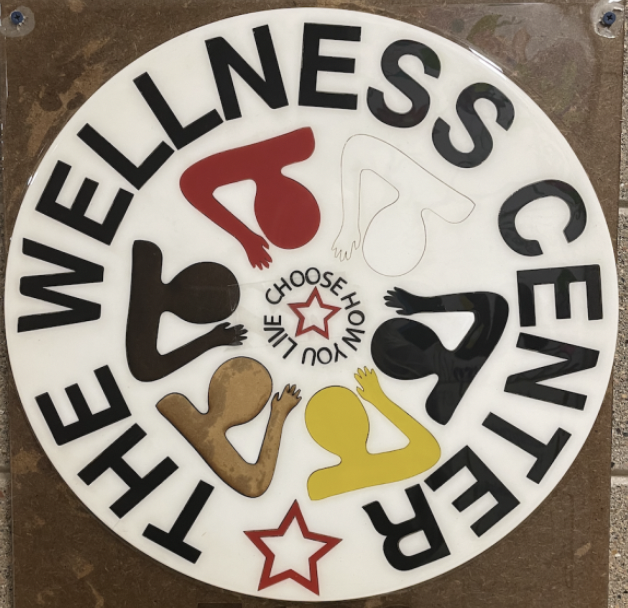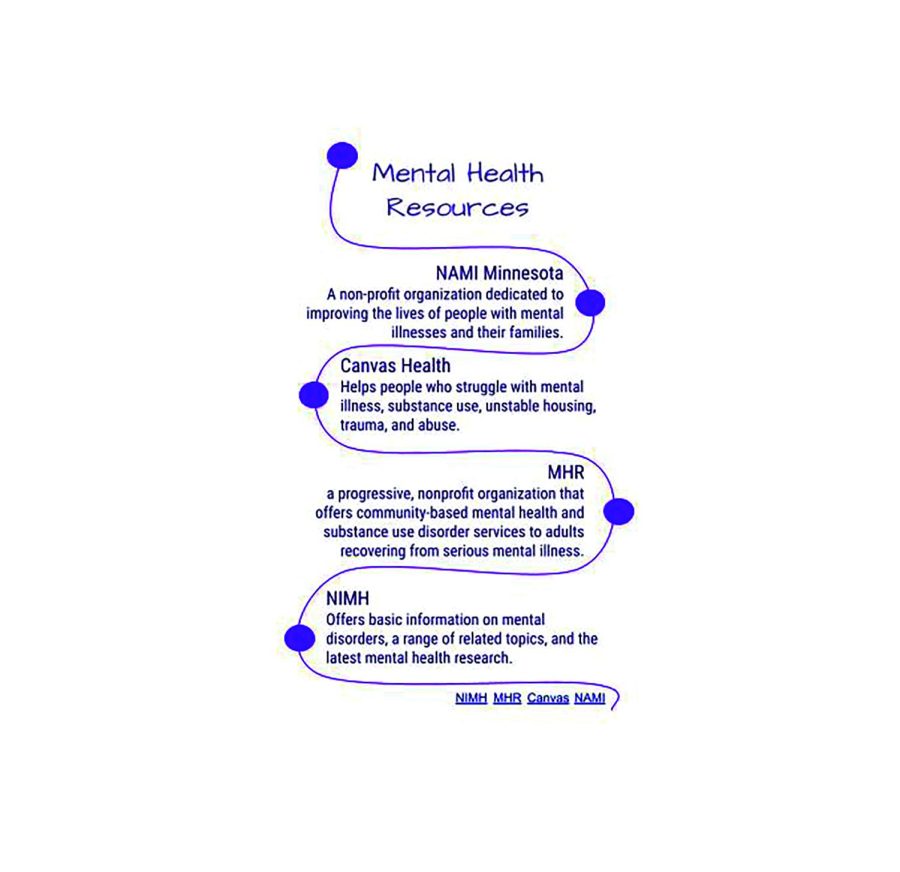Students face mental health crisis post-pandemic
January 9, 2022
The Wellness Center has partnered with Family Means to provide in-school therapy for students. The Wellness Center can be found on the first floor in the E hallway.
In wake of the recent COVID-19 pandemic and increased dependency on social media, teen mental health problems are at a higher rate than ever seen before. Key resources for students to improve mental health can be found in school and online.
According to a Minnesota Department of Health survey, more Minnesota students than ever have reported having long term mental health problems. The number is up to 23 percent as of 2019, compared to 18 percent in 2016. Notably, the number of eleventh grade females that reported having long term mental health problems has doubled since 2013.
School counselor Jennifer Prestegaard added that focusing on basic needs such as sleep, eating and time with family needs to be prioritized.
There are two main causes of the recent rise in teen mental health struggles. The first being social media. Social media has been proven harmful to mental health through numerous studies.
“81 percent of teens in the U.S. use social media,” according to Dr. Coyne, from McLean Hospital. Increased anxiety and depression is often linked to social media use.
Alex Mass, Wellness Center counselor, added, “Social media creates a really challenging kind of perfect storm, especially for young people.”
The second main cause of increased mental health problems in teens is the recent pandemic. The COVID-19 pandemic changed the way teens lived in 2019 and still affects teens today. Online school took a toll on many students, impacting teens’ social skills and the way they learned.
“In March of 2020 I think we all thought, okay, we can get through this. It’ll be June,” Sue Abderholden, National Alliance on Mental Illness executive director, said, “We were thinking it was a sprint, and then it turned into a marathon of unknown miles.”
Along with the rising numbers of teens struggling with their mental health there has come more resources to help them. For example, the school district has partnered with Family Means, a local counseling and therapy association. Family Means has provided an in school therapist that students can access by visiting the Wellness Center here at school.
Mass explained therapy as “just a space for people, a safe space, with somebody who is attuned and listening and caring.”
Finally, in order to help teens with mental illness it is important to destigmatize the topic. A stigma is a negative attitude toward people based on distinguishing characteristics. When it comes to stigma in mental health people often have a certain image of what a mental illness looks like. An example of a mental health stigma is, someone who is depressed always looks or seems sad. These stigmas cause teens to be afraid to ask for help. This is the first and most important step in tackling mental illness.
Abderholden described NAMI’s (National Alliance on Mental Health) goal as working to build a mental health system so people can get the services they need, when and where they need it.
As the school system struggles to combat this mental health crisis, “Our mental health system is not broken, it was never built,” Abderholden said.


maddy young • Feb 14, 2022 at 8:19 am
Loved this story! It is laid out really well and is easy to read and understand. Lots of good points made about kids under stress with the pandemic.
Brooke Elfert • Feb 13, 2022 at 10:02 pm
The story was wonderfully written. Your facts were strong, and blended beautifully with the quotes. I enjoyed the focus you took, this story was very informative and relatable.